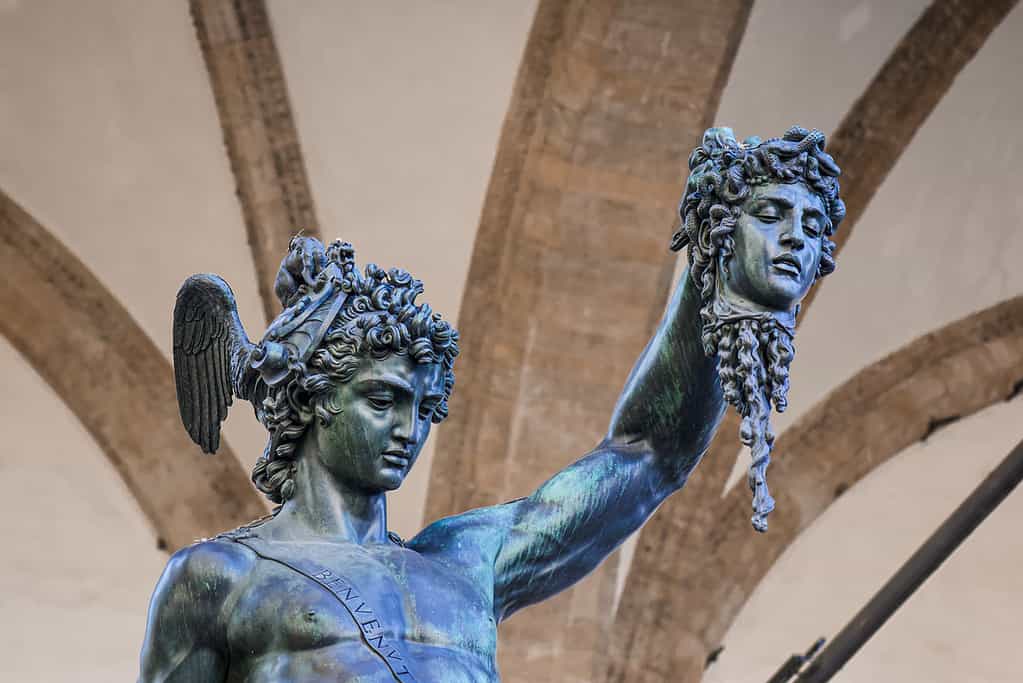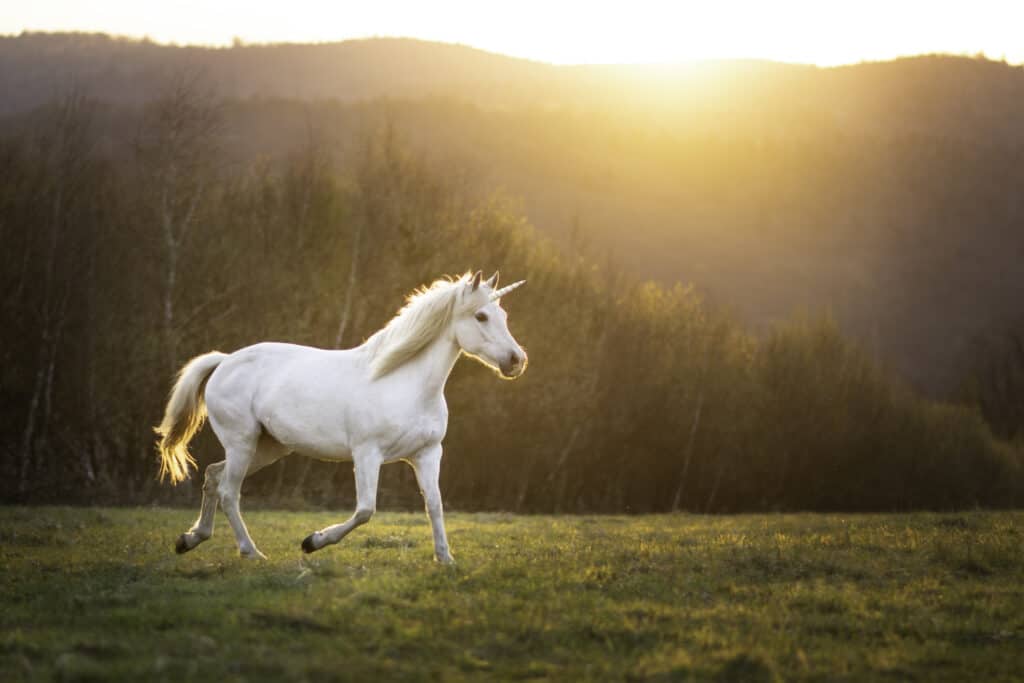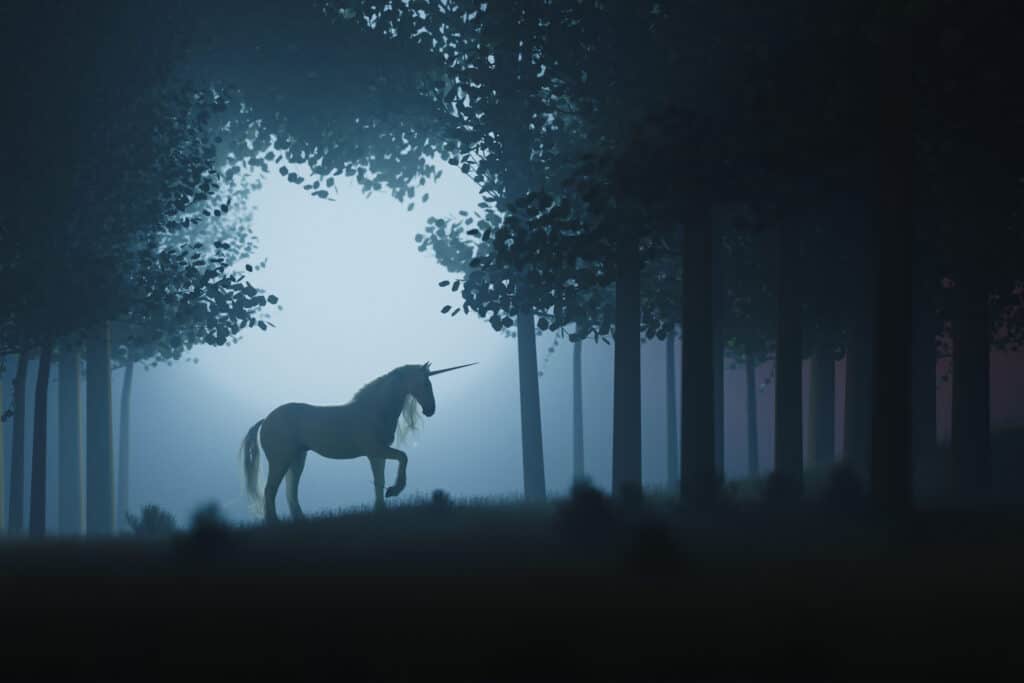Two mythological creatures with prominent features of a horse, the pegasus and the unicorn are both popular in stories, myths, and pop culture. As many similarities as the two creatures share, there are still some key differences that separate the two. Whether it’s their origin stories or the symbols that they represent, the pegasus and unicorn are two distinct animals when it comes to mythology and legend.
Key Differences Comparison Table
| Characteristic | Pegasus | Unicorn |
| Origin | Greek mythology | Middle Ages Europe |
| Physical Characteristics | Body of a horse with wings | Horse with a single spiral horn on its head |
| Symbology | Strength, valor, and honor | Innocence and purity |
Pegasus vs. Unicorn: Differences in Origin

Greek mythology says that Pegasus was born when Perseus cut off the head of Medusa.
©iStock.com/Sarah Lage
The pegasus first appeared in Greek mythology. It was described as a winged horse that could fly at fast speeds and was very powerful. In Greek mythology, Pegasus refers to an individual horse with wings that featured prominently in many myths and stories. Poseidon, the god of the sea who was also depicted as a horse-god, was the father of Pegasus. After Pegasus was born when Medusa’s head was cut off, the winged horse traveled to Mount Olympus and served Zeus. Pegasus allowed another son of Poseidon, Bellerophon, to ride him in order to defeat the Chimera.
Representations in art of animals with a single horn date back to as early as 2000 BC. But the modern version of a unicorn developed in the Middle Ages, around 500 AD. Prior to this, many accounts of unicorns believed that they were actual animals that were famously elusive and hard to catch a glimpse of in real life. By the Middle Ages and Renaissance, the focus became on unicorns as mythological beasts with magical powers. Today, unicorns are the national symbol of Scotland. Unicorns were much more prominent in European legends and stories.
Pegasus vs. Unicorn: Differences in Appearance

Unicorns are often shown as white horses with a single spiral horn on its forehead.
©iStock.com/Anna Orsulakova
It is easy to see the differences between pegasus and unicorn. Both have the bodies of a horse but the pegasus has two prominent wings on its back which allow it to fly. Unicorns, on the other hand, have a single horn on their forehead. A unicorn horn is often spiraled and ends in a distinct point. They are limited to land travel since they cannot fly.
Both Pegasus and unicorns are often shown as white animals. They have long, flowing manes and tails. These elements give them a fantastical quality as well as highlighting their pure nature. In the case of Pegasus, ancient Greeks believed that Pegasus was born of the god Poseidon. Because of his connection to the gods, Pegasus was often shown as a white horse with strong wings.
With horse bodies, both pegasus and unicorns have hooves. But in some stories, pegasus’ hooves had additional magical qualities. Myths give credit to Pegasus for the creation of Hippocrene, a magical spring on Mount Helicon, which formed when he stepped on the ground with his hoof. In some stories, unicorn horns have special healing properties using magic.
Pegasus vs. Unicorn: Differences in Symbology

The unicorn is a symbol of purity and grace, often remaining elusive and away from everyone but the most pure-hearted individuals.
©iStock.com/steved_np3
Pegasus is typically seen as a strong, warrior-like symbol. It was used in heraldry and symbols, even in modern warfare. Some units within the British Armed Forces use the Pegasus as a symbol. The Pegasus Bridge was the site of the successful airborne efforts at the Battle of Normandy in World War II.
Unicorns are generally associated with innocence and purity. They have a reputation for being very elusive and not appearing to those they do not deem worthy. In many stories, unicorns sought out pure maidens. Sometimes, these women were used to trap and tame unicorns.
Pegasus and Unicorn in Real Life

The unicorn is featured prominently in the coat of arms of England and Scotland.
©Studio DMM Photography, Design & Art/Shutterstock.com
While the actual winged horse called Pegasus is not real, there is a constellation of stars honoring the mythological figure. The constellation was first described in the 2nd century and remains a recognizable collection of stars in the night sky today. Even though it is not a real animal, the unicorn is the national symbol of Scotland. It features on the coat of arms of Scotland and England.
The photo featured at the top of this post is © Toshauna/Shutterstock.com
Thank you for reading! Have some feedback for us? Contact the AZ Animals editorial team.






